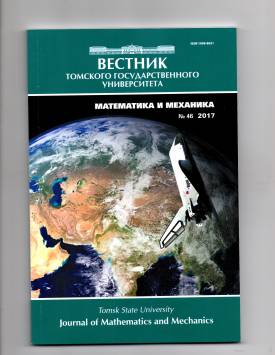Numerical investigation of the vortex formation in a liquid metal under the action of disk agitator
A numerical study of the molten metal flow in a crucible under the action of a rotating agitator of a special shape has been performed. The turbulent flow field is described using the k-s turbulence model. The position of the air-liquid metal interface was determined by the VOF method. The set of governing equations written in the frame of reference associated with the rotating agitator was solved using the ANSYS Fluent software. The convergence of the numerical solution with a mesh refinement has been demonstrated. The patterns of the molten metal flow in the crucible for different agitator speeds of rotation have been obtained. The dependences of turbulent diffusion, size of turbulent eddies, and power criterion on the speed of rotation of the agitator have been defined. The effect of interaction between the metal-air interface and elements of the agitator on the flow pattern of molten metal in the crucible has been investigated. It is shown that the conditions under which elements of the agitator are completely immersed in the liquid metal are more favorable for the formation of small vortices than the conditions under which the liquid metal-air interface interacts with agitator elements.
Keywords
turbulence flow, disk agitator, diffusion coefficient, molten metal flow, коэффициент диффузии, дисковый завихритель, турбулентное течение, течение расплавленного металлаAuthors
| Name | Organization | |
| Khmeleva Marina Grigorievna | Tomsk State University | khmelmg@gmail.com |
| Dammer Vladislav Khristianovich | Scientific Industrial Centre "Polyus" | dammer.tomsk@yandex.ru |
| Tokhmetova Aigerim Bauyrzhanovna | Tomsk State University | aiko050294@mail.ru |
| Min'kov Leonid Leonidovich | Tomsk State University | lminkov@ftf.tsu.ru |
References

Numerical investigation of the vortex formation in a liquid metal under the action of disk agitator | Vestnik Tomskogo gosudarstvennogo universiteta. Matematika i mekhanika – Tomsk State University Journal of Mathematics and Mechanics. 2017. № 46. DOI: 10.17223/19988621/46/10
